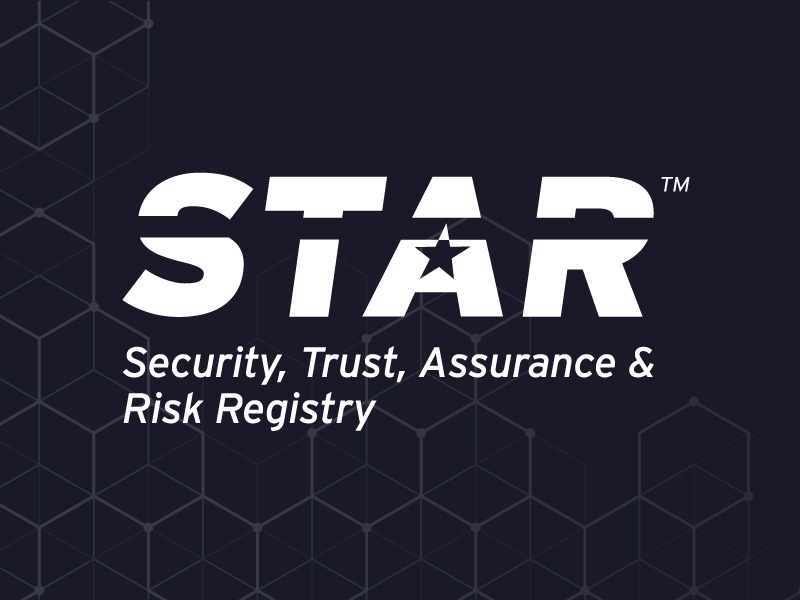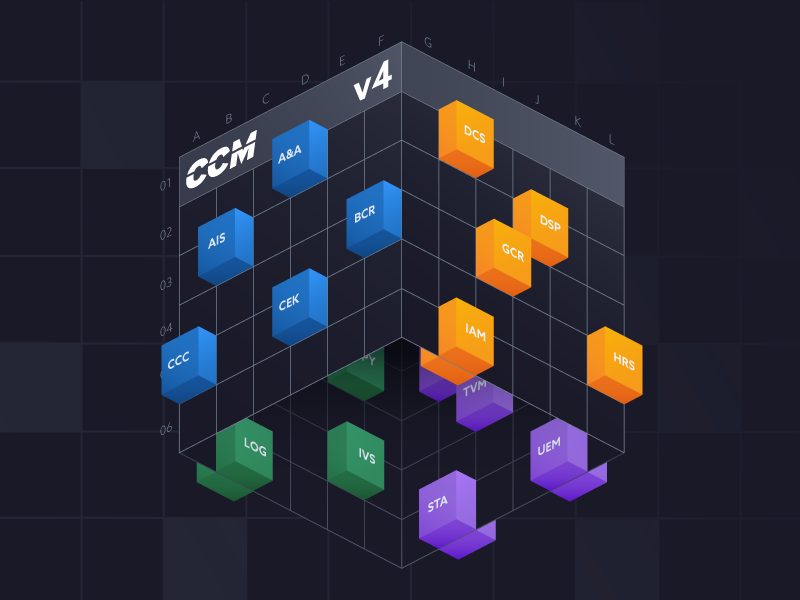NIST AI RMF: Everything You Need to Know
Published 06/17/2025
Originally published by Vanta.
Written by the Vanta team.
The NIST AI Risk Management Framework (RMF) is one of the most advanced, globally accepted guidelines for the safe and responsible use of AI systems. If your organization implements AI in any capacity, adopting the NIST AI RMF can be a significant move toward future-proofing your operations and strengthening AI trustworthiness among customers.
Despite being a relatively new framework, many security teams are looking to implement the NIST AI RMF for ethical AI deployment in a risk-aware environment and for responsibly monitoring and mitigating risks throughout the AI lifecycle.
In this guide, we’ll explore NIST AI RMF’s significance from a regulatory and operational perspective. We’ll discuss:
- Overview of the NIST AI RMF and its intended users
- Key characteristics of the framework
- The framework’s structure
- Tips for implementing NIST AI RMF
What is the NIST AI RMF?
The NIST AI RMF is a voluntary, non-certifiable framework that helps organizations responsibly design, develop, implement, and use AI systems in their operations—there’s a focus on ethical and risk-aware implementation. The framework was designed to fulfill the 2023 U.S. Presidential Executive Order on the safe use of AI and help regulate its implementation.
The framework’s main purpose is not to have a mere list of action items for adherence—the idea is to help organizations identify and mitigate AI risks, such as algorithmic bias and misinformation, while enabling sustainable cultural change in terms of how organizations manage these risks.
It’s a consensus resource developed through the collaboration of over 240 entities from public and private sectors, as well as academia. As a result of such robust contributions, the NIST AI RMF has become a highly reputable and authoritative source in the domain of AI regulation.
Who should adopt the NIST AI RMF?
The NIST AI RMF is intended for any organization that designs, develops, and uses AI in any capacity, regardless of its industry. Organizations that can benefit from the framework the most include:
- AI-based solution providers
- Organizations that deploy AI systems
- Entities and individuals that participate in the AI system lifecycle (includes data analysts, software engineers, etc.)
- Organizations in highly regulated industries (fintech, healthcare, etc.)
- Government organizations that use AI-based software for public safety or allied services
While the NIST AI RMF is voluntary, it prescribes critical controls and principles of responsible AI use that might become a part of mandatory regulations in the future, especially as the AI landscape gets more heavily regulated.
We’re also seeing a rapid increase in government-backed efforts to legislate and standardize the use of AI through various authoritative sources (e.g., ISO 42001 and the EU AI Act), so implementing the NIST AI RMF is an excellent way to be proactive.
Benefits of adopting the NIST AI RMF
Implementing the NIST AI RMF can bring many advantages, most notably:
- Effective risk management: NIST AI RMF introduces careful controls and guidelines that identify and mitigate the risks and vulnerabilities surrounding AI systems, adding stability to your operations.
- Industry-standard AI practices: Merely implementing AI isn’t enough—you must do it in a way that safeguards the privacy and rights of your end users. By adopting the NIST AI RMF, you get a roadmap to responsible AI deployment as guided by industry-accepted best practices.
- Competitive advantage: While most businesses are adopting AI in one way or another, doing it according to a reputable framework helps you maintain a competitive advantage over similar organizations that don’t.
- Improved customer trust: Many customers are still quite wary of AI systems and their dangers. The NIST AI RMF is designed to uphold fundamental human rights—especially around respecting privacy and reducing AI bias—so implementing it greatly enhances customer trust.
7 key characteristics of the NIST AI RMF
The NIST AI RMF largely revolves around building and implementing trustworthy AI systems to effectively mitigate AI volatility and other inherent risks. Trustworthiness is determined by seven characteristics (or principles), which are explained in the following table:
| Characteristic/Principle | Explanation |
|---|---|
| Valid and Reliable | AI systems must function as planned for their intended use without failure, generating accurate/validated findings. |
| Safe | AI solutions must not endanger the well-being of any actors. It requires responsible design and deployment, as well as robust documentation attesting to its safety. |
| Secure and Resilient | AI systems must ensure data availability and integrity and be able to withstand security threats like the exfiltration of models or intellectual property. They must be able to recover quickly and continue operating during and after disruptions/incidents. |
| Accountable and Transparent | The information about AI systems and the output they generate must be readily available to the affected individuals, and AI actors must maintain a high level of accountability. |
| Explainable and Interpretable | To ensure adequate oversight, AI systems must be easily explainable and interpretable to the parties involved in their development, deployment, and evaluation. |
| Privacy-Enhanced | AI systems should include privacy-enhancing technologies (PETs) and leverage data minimization to protect the sensitive data of their users. |
| Fair – with Harmful Bias Managed | AI solutions must promote equality and equity through the removal of discrimination or any type of harmful bias. According to NIST, the three categories of bias that must be removed are:
|
NIST AI RMF: Structure breakdown
The NIST AI RMF is built around four core functions:
- Govern
- Map
- Measure
- Manage
Each function has various control categories, which we’ll elaborate on in the following sections.
1. Govern
Govern is the central function of the NIST AI RMF, and it should be integrated into the other three. Some of the key purposes of the function include:
- Developing an organization-wide culture of risk management throughout the AI lifecycle
- Aligning AI risk management processes with an organization’s policies, principles, and strategic priorities
- Addressing the entire AI product lifecycle alongside associated processes
To achieve these goals, the Govern function encompasses six categories:
- Govern 1: Organization-wide processes, procedures, policies, and practices regarding the mapping, measuring, and managing of AI risks
- Govern 2: The organization implements accountability structures so that the appropriate individuals and teams are responsible, empowered, and trained for mapping, measuring, and managing AI risks
- Govern 3: The organization prioritizes workforce diversity, accessibility, inclusion, and equity processes in the mapping, measuring, and managing of AI risks across the AI lifecycle
- Govern 4: Organizational teams are committed to a culture that is aware of and communicates AI risk
- Govern 5: The organization implements processes for robust engagement with relevant AI actors
- Govern 6: AI risks and benefits arising from third-party software, data, and other supply chain issues are addressed through well-planned policies and procedures
Each category has several subcategories that further specify it. For example, Govern 6.1 concretizes the third-party risk that should be addressed, while Govern 6.2 stresses the importance of the related contingency processes.
2. Map
The Map function aims to clarify the dependencies between different AI-related processes and actors. It serves as the basis for Measure and Manage functions by ensuring comprehensive visibility of AI risks.
Specific objectives of this function include:
- Enabling visibility into AI systems to spot errors in their functionality
- Highlighting the beneficial effects of AI systems
- Identifying and anticipating risks within and beyond the intended use of AI systems
The Map function consists of five categories:
- Map 1: Context is established and understood
- Map 2: AI systems are categorized
- Map 3: AI capabilities, goals, targeted usage, and expected benefits and costs are understood and compared with appropriate benchmarks
- Map 4: The organization maps risks and benefits for all components of the AI system, including third-party software and data
- Map 5: AI’s impacts on individuals, organizations, groups, communities, and society are characterized
Map 1, being the most important function, has various subcategories that provide further guidelines for establishing context through activities that include:
- Defining the mission and goals of AI technologies
- Determining and documenting the organization’s risk tolerance
- Gathering and understanding system requirements provided by the relevant AI actors
3. Measure
The Measure function stresses the importance of adequate assessment and benchmarking of AI systems through different approaches (quantitative, qualitative, etc.). The main purposes of this function include the following:
- Developing robust procedures for tracking the performance of AI systems
- Documenting an AI system’s functionality and trustworthiness
- Informing management decisions regarding AI systems
Within the Measure function, you’ll see four categories:
- Measure 1: The organization identifies and applies the appropriate AI metrics and methods
- Measure 2: The organization evaluates AI systems for trustworthiness characteristics
- Measure 3: Sufficient mechanisms for tracking identified AI risks are implemented
- Measure 4: Feedback about the effectiveness of measurements is collected and assessed
As for the subcategories, most of them provide specific monitoring instructions and characteristics that must be assessed. For example, Measure 2 subcategories list different trustworthiness characteristics, such as:
- Privacy risk
- Fairness and bias
- Environmental impact
4. Manage
The Manage function leverages the information of the other functions to allocate risk resources appropriately. Some of the function’s main objectives include:
- Effective risk prioritization
- Development of monitoring and improvement plans
- Increased AI risk management capacity
Much like the Measure function, the Manage function has four categories:
- Manage 1: The organization prioritizes, responds to, and manages AI risks based on assessments and other analytical output from the Map and Measure functions
- Manage 2: Strategies to minimize negative AI impacts and maximize benefits are planned, prepared, implemented, documented, and informed by input from relevant AI actors
- Manage 3: AI risks from third-party entities are managed
- Manage 4: The organization documents and monitors risk treatments for the identified and measured AI risks, including response, recovery, and communication plans
The function’s subcategories explain how to achieve the controls described by their respective categories. For instance, Manage 2 subcategories highlight the requirement for sufficient resources, mechanisms, and procedures for mitigating risks and sustaining the value of AI systems.
Tips for implementing the NIST AI RMF
To successfully implement the NIST AI RMF, consider following these tips:
- Engage cross-functional teams in the development and deployment of AI systems: Even if you plan on implementing AI in a single business function, you’ll need to involve various stakeholders and departments (IT, legal, etc.) to bring in diverse perspectives and solutions.
- Conduct risk assessments and impact analyses: Before implementing an AI system, review your risk landscape, particularly focusing on third-party risks to the system, as they can impact an AI’s reliability.
- Incorporate risk detection and mitigation strategies in the AI framework: Effective implementation of the NIST AI RMF relies heavily on effective processes for checking dataset biases, conducting rich testing scenarios, and ensuring architecture safety.
- Test and validate AI systems ongoingly: Continuous improvement is one of the key principles of the NIST AI RMF, so make sure to monitor the effectiveness and trustworthiness of your AI systems throughout their lifecycle.
- Maintain a document trail for transparency: From risk assessment results to system test data, all your AI-related initiatives should be documented to enable streamlined evidence collection for internal and external purposes. While NIST AI RMF does not offer a mandatory certification, you can still use the evidence to get a third-party attestation.
Implementing the NIST AI RMF demands organizational maturity and structure. To simplify the process, support the framework’s implementation with a dedicated automation platform.
Unlock Cloud Security Insights
Subscribe to our newsletter for the latest expert trends and updates
Related Articles:
The Ghost in the Machine is a Compulsive Liar
Published: 12/12/2025
Why Your Copilot Needs a Security Co-Pilot: Enhancing GenAI with Deterministic Fixes
Published: 12/10/2025





.png)
.jpeg)
.jpeg)
.jpeg)
.jpeg)